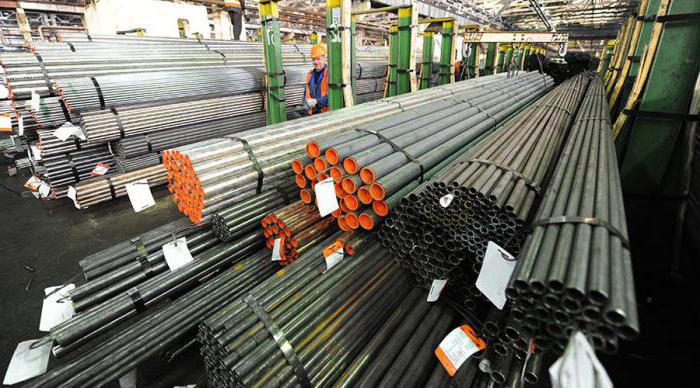The global economy is steadily moving towards globalization, and Russia is no exception. The leaders of various enterprises make significant efforts to strengthen the capital of their structures. It is this fact that determines such processes as mergers and acquisitions of companies. Such a strategy can significantly increase the level of efficiency and bring the organization to the new horizons of large business.
Essence of the process
If we talk extremely simply about this topic, we can imagine the merger procedure as follows: several separate and independent from each other enterprises are combined into a single company. But in such a situation, one organization, as a rule, plays the dominant role, since it has the most powerful capital and economic potential as a whole. It is from her that the merger initiative comes. It is worthwhile to understand the fact that the shareholders of those enterprises that took part in the association retain their shares, only the name of the company changes, but not the amount of dividends.

It is also important to understand that processes such as mergers and acquisitions have some differences.
When one company absorbs another, it repurchases all or all of its shares from the shareholders of the organization, which merges into the main, dominant enterprise. This means that those who owned a certain share of capital in the acquired structure lose it after the acquisition process is completed.
Modern approach
Initially, as described above, there are two key objectives of a merger: the acquisition of new competitive advantages within a specific market and the increase in the level of well-being of shareholders.
It is worthwhile to understand that, regardless of which joint-stock company we are talking about, the company’s development algorithm will inevitably come to the moment when the need for takeover or merger arises. In a modern market economy, without such a strategy, it will be extremely difficult to take a leading position among active competitors.
If the company is not yet ready for such drastic measures, then you can choose a different path. We are talking about the use of such internal methods as the introduction of new technologies, improving management efficiency, as well as the quality of labor organization. Modern business schemes can also be attributed to this category.
At the same time, external methods, which include a merger, are quite popular in the medium and large business segment.
Action strategy
There is a certain algorithm on the basis of which you can conduct a successful takeover or a merger procedure. These are the following steps:
- competent choice of the organizational form of the transaction;
- the availability of the necessary financial resources to conduct a full-fledged procedure for connecting companies
- conducting the transaction in such a way that it does not violate any requirements of the antitrust laws;
- if it was decided to start the process of merging, then in as soon as possible it is necessary to determine who will occupy a key leadership position;
- It will also require extremely effective inclusion in the process of specialists of both senior and middle management.

If you thoroughly approach the implementation of these steps, then the merger procedure will be painless.
When absorption is most relevant
It makes sense to touch on the main motives for launching such processes in more detail.You can start with the situation when a particular company needs to significantly reduce the risks that are possible in the framework of its core business. For this, a merger of two or more companies can be carried out, moreover, from different market segments. The combination or absorption of several enterprises makes it possible to produce various types of products, using a tool such as geographical diversification in the marketing of finished goods or raw materials. This strategy allows the main company to significantly expand its presence.
A merger may be relevant if the company is reviewing the priority of key activities. At this stage, new relevant production areas may appear, replacing the previous ones that have become unprofitable.
Finally, a takeover may be a good strategy for a company that is successfully developing in a particular industry, but still needs to strengthen its own position in order to obtain the desired competitive advantage. In this case, the association is made with organizations operating in the same segment as the takeover enterprise.
Types of Mergers
There are many forms that can take the union of several organizations into one. The same can be said of absorption. In this case, the most common are highlighted. They will be discussed.

First, it makes sense to mention conglomerate and patrimonial mergers.
The first type characterizes this type of association in which companies merge that do not have any commonality on the basis of production. That is, we are talking about enterprises from completely different industries. This means the absence of any connection (competition, consumption and supply of goods).
When structures without technological and targeted unity are combined in a conglomerate format, this often leads to the abolition of the main activities of the integrator. Instead of a key profile, many equal areas of production appear.
The merger of companies looks a little different. In this case, it is worthwhile to understand that we are talking about enterprises that produce interconnected product groups. An example is the association of a company manufacturing mobile gadgets with an enterprise specializing in digital technology as such.
When leadership disagrees
Another group of mergers, defined in relation to the transaction of managerial personnel, is friendly and hostile associations. In the first case, the initiative of such a process is supported by both heads of organizations and shareholders of both enterprises.
But the hostile form implies that the planned transaction does not receive the approval of the leadership of the structure that should be absorbed. As a result, certain contraceptive measures can be taken. With this reaction, the owners of the initiating company begin an aggressive game in the securities market, aimed at absorbing the target.
National and transnational format
It is worth noting that sometimes a merger can take place within the framework of the 50/50 principle. But the experience of many companies has proved that it is extremely difficult to implement such a parity model of integration.
Now for the national merger. This term is used to define a combination of companies that are located in the same country.
The definition of transnational integration is used to describe the merger of enterprises located in different states.
Vertical and horizontal type
This direction is determined depending on the nature of the merger.
The vertical image is used to describe the integration in which companies from different industries are combined, having a common technological process for the production of finished goods.In other words, the company initiating this process expands the subsequent production stages to the final consumer or the previous ones up to working with sources of raw materials. An example is the integration of metallurgical, engineering and mining enterprises.

The horizontal merger is characterized by the fact that the specifics of the structures completely coincide within the industry, the direction of production and its various stages, inclusive.
Combination Methods
If we take into account precisely the method by which the integration of companies is carried out, then two key areas can be distinguished:
- Corporations. This type of merger is used when it is necessary to combine all the active companies that are involved in the transaction.
- Corporate alliances. In this case, we are talking about the takeover or merger of two or more companies whose activities are developed within the framework of a particular type of business. Such a deal allows you to ultimately get synergistic effect only in the direction of this type of activity. As for other production areas or types of services, the dominant organization deals with them independently, without involving additional resources from the outside. Separate structures can be created to organize alliances.
The most striking examples
Initially, a takeover involves a procedure that should ultimately give the dominant company significant competitive advantages. Nevertheless, there are also cases when the association of sufficiently serious firms ends in failure.
Considering the largest mergers, the first example is the acquisition in 2001 of AT&T by the Comcast media conglomerate. This allowed the latter to take one of the leading places in the US in the cable television market. This process required quite serious expenses in the amount of $ 76.1 billion. Such a strategy of repurchasing the selected company in parts gave a tangible positive effect.

Competent actions by Comcast led to the simultaneous neutralization of a key competitor in their current field of activity and an increase in the quality of services provided by expanding the geography of the cable network.
To better understand what consequences a merger can generate, examples of the negative outcome of such a process should also be studied.
One of the most expensive and unsuccessful was the merger of AOL and Time Warner Cable. To conclude this transaction, AOL allocated more than $ 180 billion. Initially, everything looked more than promising, but in the end both companies dropped out of the list of leaders within their segment. As one of the key reasons for the collapse of the Internet giant AOL, experts call the loss of financial flexibility after an excessively expensive merger.
Now it’s worth returning to successful deals and paying attention to the combination of Mobil and Exxon. In principle, at first glance there is nothing interesting. But if you look a little into the history of these enterprises, you can find out that they were originally one, until 1911 being part of Standard Oil, owned by John Rockefeller. A long-standing separation occurred according to the antitrust verdict of the court. As a result, the once fragmented capital was again united, though only partially. But even this was enough to get powerful competitive advantages.
How are things in Russia
In the CIS, large enterprises merge in a slightly different way than in the western market. If you try to highlight the most common format in which the merger of Russian companies is carried out, it makes sense to pay attention to the integral form.

With the existing non-payment crisis, vertical associations provide one key advantage - to neutralize such a problem as receivables.With the help of such transactions production tasks are also solved.
It is important to note the fact that the merger of Russian companies in the vast majority of cases is noticeably politicized. Such transactions are used in the interests of representatives of the local administration or higher levels of government.
Merger Features
A surge in associations of various kinds in Russia was recorded during 2003, when it reached a total level of $ 22.9 billion. But already next year, this figure decreased slightly.
When it comes to various kinds of mergers, the state often acts as the main player. Mainly taken into account are enterprises operating in the oil and gas sector, as well as in the metallurgy segment.

As for the interests of foreign enterprises, they also choose representatives of the oil and gas industry for integration, but do not forget about the food sector.
What does the merger look like in Russia?
One of the striking examples of the merger process in the CIS is the experience of such an enterprise as UMMC-Holding LLC. This company has consolidated 10 processing, color and black industries. Currently, the direct influence of the UMMC includes control of 22 companies located in 7 cities of the Russian Federation. This may also include the Lithuanian factory “Litaskabelis” (the city of Panevezys).
A key objective for which numerous merger procedures were initiated is to increase the market share of the enterprise. It was the integration that allowed UMMC to create additional production capacities in a relatively short time. Also, investment risks significantly decreased, since only those companies were joined whose functioning was verified by the real market.
Summary
In the current economy, mergers and acquisitions are a relevant prospect for dynamic development for many companies that have ambitions but do not have sufficient capacities.

At the same time, it is worth mentioning that integration is a risky process. In case of unsuccessful forecasts, financial losses can be incurred, after which the company will not be able to recover.

